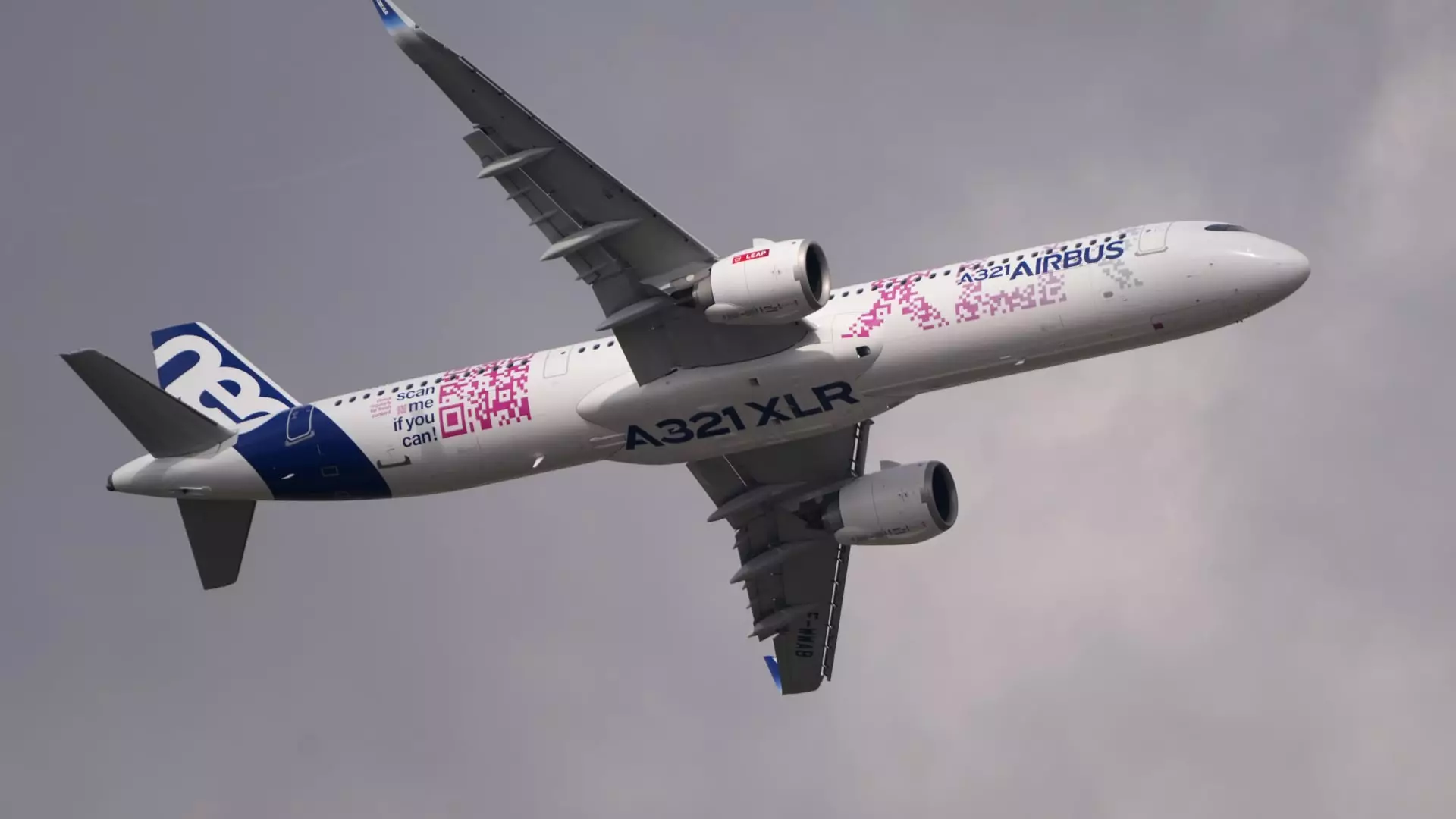Airbus has made a significant leap in the aviation industry by delivering its first A321XLR, an extra-long-range narrow-body aircraft that promises to transform longer-haul flights. Boasting an impressive range of 4,700 nautical miles, the A321XLR can operate nonstop flights for up to 11 hours. This advancement represents a pivotal step forward in the development of more fuel-efficient jets, allowing airlines to connect distant destinations without the need for costly layovers. Notably, the A321XLR consumes approximately 30% less fuel than older aircraft models, which not only benefits the environment but also reduces operational costs for airlines.
Iberia, Spain’s flagship airline, is set to be the first to operate this new aircraft, with plans for a maiden route connecting Madrid to Boston next month. This decision highlights the airline’s commitment to modernizing its fleet while enhancing its service offerings. Furthermore, major U.S. carriers such as American Airlines and United Airlines have also expressed confidence in the A321XLR, placing significant orders to integrate these efficient jets into their fleets. The response from these airlines signals a shift in consumer demand for airlines that prioritize sustainability and efficiency.
The introduction of the A321XLR is particularly noteworthy in the context of the competition between Airbus and Boeing. With Airbus’s delivery of this advanced model, the gap between these two aviation giants is further pronounced. Boeing is currently facing challenges following the two tragic crashes of its 737 Max aircraft, which have resulted in heightened scrutiny and a reassessment of the company’s future aircraft developments. Plans for new models that could bridge the performance gap between narrow-body and wide-body planes, such as replacing aging 757s, are now on hold. Instead, Boeing is forced to refocus its strategies, cutting jobs and divesting non-core operations to streamline its processes.
Airbus’s current backlog of almost 8,600 aircraft underscores a robust demand for its aviation solutions, even though the A321XLRs represent a smaller portion of that list. The acceptance of newer models that focus on fuel efficiency and environmental sustainability will likely shape future market operations. Airlines are becoming increasingly aware that investing in modern, fuel-efficient aircraft not only serves their financial interests but also aligns with global environmental targets. As regulatory frameworks continue to tighten around emissions and sustainability, both manufacturers and airlines will need to adapt to maintain their competitive edge in the marketplace.
The delivery of the A321XLR marks a significant advancement for Airbus and the aviation industry at large. With its focus on sustainability, cost-efficiency, and enhanced operational capabilities, the A321XLR sets a new standard for narrow-body aircraft. As other companies like Boeing work through their challenges, Airbus may find itself at the forefront of a shift toward more environmentally-friendly aviation practices. The future of air travel is poised for exciting transformations as these developments unfold on the global stage.

